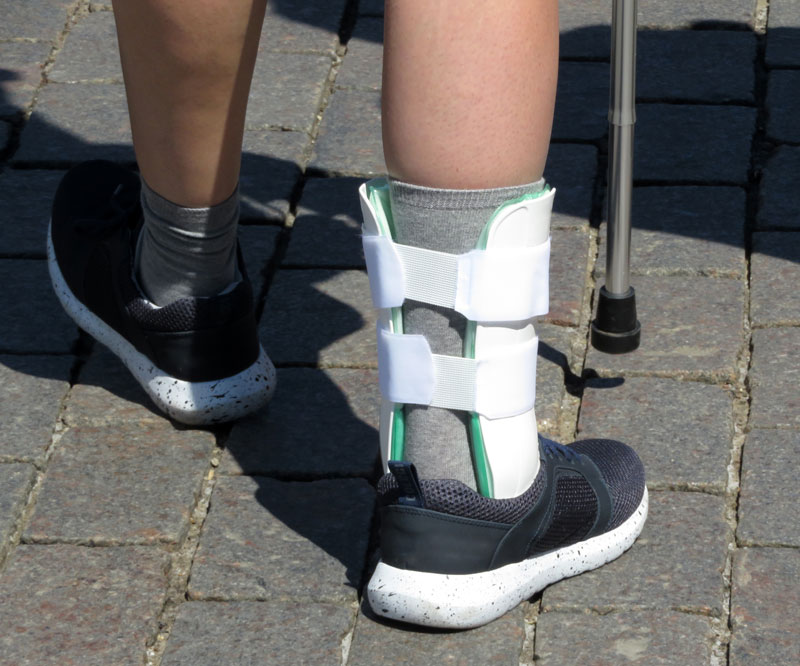
iStockphoto.com #992705780
Stroke often impairs walking, particularly by altering foot clearance during the swing phase. Activity of the tibialis anterior (TA) plays an important role in foot clearance; clinicians often prescribe an ankle-foot orthosis (AFO) for post-stroke patients to help with foot clearance. But some commentators worry that providing an AFO too soon after stroke could in fact impede recovery of foot clearance. To explore this concern, researchers from the Netherlands looked at early and delayed use of AFOs in stroke patients to determine whether:
- use of an AFO for 26 weeks affects TA activity
- early or delayed timing of AFO use matters
- AFOs affect TA activity within a single measurement.
This randomized controlled trial analyzed 26 unilateral hemiparetic patients: 16 assigned to receive the AFO 1 week post-stroke (15 were analyzed) and 17 assigned to receive the AFO 8 weeks post-stroke (11 were analyzed). In study Weeks 1, 9, 17, and 26, electromyography was used to measure TA activity.
The researchers found that, compared with walking without an AFO, use of an AFO significantly reduced TA activity levels during the swing phase (P = .041). Throughout the 26-week period, they saw no changes in TA activity without an AFO, neither within groups (P = .420 [early] and P = 0.282 [delayed]) nor between groups (P = .987). Furthermore, at the end of 26 weeks, the researcher found no differences in TA activity between both groups in the swing phase, with (P = .207) or without an AFO (P = .310).
Use of an AFO for 26 weeks did not affect muscle activity, regardless of when the AFO was provided (Week 1 or Week 8). The researchers did not detect negative effects on activity of the TA with long-term use of an AFO early after stroke.
To explain their results, the researchers cited studies suggesting that the possible negative effects of an AFO on muscle activity in a single gait cycle might be counteracted by the fact that an AFO improves walking in general. They proposed that an increase in the amount of walking (steps taken) offsets a decrease in EMG during a single step. They also note that this work builds on that of others showing:
- positive effects of AFOs on ankle kinematics early after stroke
- no differences in the effects of early or delayed AFO provision on pelvis, hip, and knee kinematics
- beneficial effects of AFOs on functional levels
- no differences with respect to balance and mobility between early and delayed provision of AFOs; early provision showed favorable outcomes in the first 11 to 13 weeks, possibly resulting in earlier independent and safe walking.
The authors conclude: “For clinical practice, this means that clinicians, together with the patient, can decide when to start AFO treatment based on personal priorities and preferences. Early AFO provision is expected to provide beneficial effects on a functional level in the short-term, without negatively affecting muscle activity of the TA in the long-term.”
Source: Nikamp C, Buurke J, Schaake L, Van der Palen J, Rietman J, Hermens H. Effect of long-term use of ankle-foot orthoses on tibialis anterior muscle electromyography in patients with sub-acute stroke: a randomized controlled trial. J Rehabil Med. 2019;51(1):11–17.








